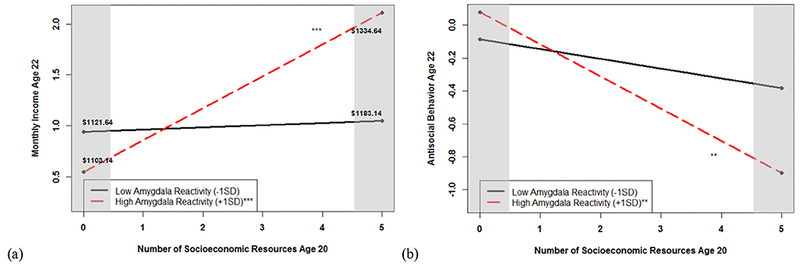Figure 2.

Shaded regions indicate the values of socioeconomic resources where the moderator (i.e., amygdala reactivity) significantly predicts the outcome (i.e., self-reported income or antisocial behavior). (a) Amygdala reactivity to all facial expressions moderates the relation between socioeconomic resources at age 20 and self-reported income at age 22. Monthly income was divided by 100 to reduce the variance of this variable for analytic purposes. While high amygdala reactivity is operationalized as > 1 SD above the mean for graphical purposes, the regions of significance for the moderator indicated that socioeconomic resources at age 20 predicted monthly income at age 22 only for individuals with high amygdala reactivity to all faces (calculated as values greater than −.10 where the mean was 0) (b) Amygdala reactivity to fearful facial expressions moderates the relation between socioeconomic resources at age 20 and antisocial behavior at age 22. While high amygdala reactivity is operationalized as > 1 SD above the mean for graphical purposes, the regions of significance for the moderator indicated that socioeconomic resources at age 20 antisocial behavior at age 22 only for individuals with high amygdala reactivity to fearful facial expressions (calculated as values greater than 0, or the mean).
N=258
** indicates the simple slope was significant at p < .01
*** indicates that the simple slope was significant at p < .001
